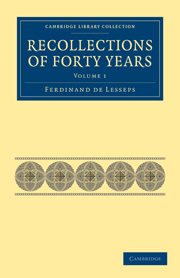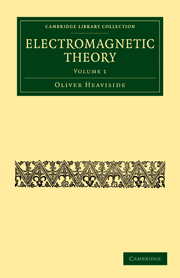Refine search
Actions for selected content:
13588 results in History of science and technology
Chapter 8 - Taking stock of the evolutionary dimensions of Kuhn’s epistemology
- from Part II - Kuhn’s evolutionary epistemology
-
- Book:
- Kuhn's Evolutionary Social Epistemology
- Published online:
- 07 October 2011
- Print publication:
- 29 September 2011, pp 137-142
-
- Chapter
- Export citation
Frontmatter
-
- Book:
- Kuhn's Evolutionary Social Epistemology
- Published online:
- 07 October 2011
- Print publication:
- 29 September 2011, pp i-v
-
- Chapter
- Export citation
Acknowledgements
-
- Book:
- Kuhn's Evolutionary Social Epistemology
- Published online:
- 07 October 2011
- Print publication:
- 29 September 2011, pp x-xiv
-
- Chapter
- Export citation
Chapter 1 - Scientific revolutions as lexical changes
- from Part I - Revolutions, paradigms, and incommensurability
-
- Book:
- Kuhn's Evolutionary Social Epistemology
- Published online:
- 07 October 2011
- Print publication:
- 29 September 2011, pp 15-33
-
- Chapter
- Export citation
Introduction
-
- Book:
- Kuhn's Evolutionary Social Epistemology
- Published online:
- 07 October 2011
- Print publication:
- 29 September 2011, pp 1-12
-
- Chapter
- Export citation
Part I - Revolutions, paradigms, and incommensurability
-
- Book:
- Kuhn's Evolutionary Social Epistemology
- Published online:
- 07 October 2011
- Print publication:
- 29 September 2011, pp 13-14
-
- Chapter
- Export citation
Part II - Kuhn’s evolutionary epistemology
-
- Book:
- Kuhn's Evolutionary Social Epistemology
- Published online:
- 07 October 2011
- Print publication:
- 29 September 2011, pp 79-86
-
- Chapter
- Export citation
Chapter 4 - The epistemic significance of incommensurability
- from Part I - Revolutions, paradigms, and incommensurability
-
- Book:
- Kuhn's Evolutionary Social Epistemology
- Published online:
- 07 October 2011
- Print publication:
- 29 September 2011, pp 65-78
-
- Chapter
- Export citation
Chapter 6 - Truth and the end of scientific inquiry
- from Part II - Kuhn’s evolutionary epistemology
-
- Book:
- Kuhn's Evolutionary Social Epistemology
- Published online:
- 07 October 2011
- Print publication:
- 29 September 2011, pp 101-116
-
- Chapter
- Export citation
Chapter 7 - Scientific specialization
- from Part II - Kuhn’s evolutionary epistemology
-
- Book:
- Kuhn's Evolutionary Social Epistemology
- Published online:
- 07 October 2011
- Print publication:
- 29 September 2011, pp 117-136
-
- Chapter
- Export citation
Chapter 10 - What makes Kuhn’s epistemology a social epistemology?
- from Part III - Kuhn’s social epistemology
-
- Book:
- Kuhn's Evolutionary Social Epistemology
- Published online:
- 07 October 2011
- Print publication:
- 29 September 2011, pp 170-185
-
- Chapter
- Export citation
Chapter 3 - Kuhn and the discovery of paradigms
- from Part I - Revolutions, paradigms, and incommensurability
-
- Book:
- Kuhn's Evolutionary Social Epistemology
- Published online:
- 07 October 2011
- Print publication:
- 29 September 2011, pp 48-64
-
- Chapter
- Export citation
Part III - Kuhn’s social epistemology
-
- Book:
- Kuhn's Evolutionary Social Epistemology
- Published online:
- 07 October 2011
- Print publication:
- 29 September 2011, pp 143-148
-
- Chapter
- Export citation
Chapter 12 - Where the road has taken us
- from Part III - Kuhn’s social epistemology
-
- Book:
- Kuhn's Evolutionary Social Epistemology
- Published online:
- 07 October 2011
- Print publication:
- 29 September 2011, pp 201-209
-
- Chapter
- Export citation

Memoirs of Richard Lovell Edgeworth, Esq
- Begun by Himself and Concluded by his Daughter, Maria Edgeworth
-
- Published online:
- 07 September 2011
- Print publication:
- 24 February 2011
- First published in:
- 1820

Recollections of Forty Years
-
- Published online:
- 07 September 2011
- Print publication:
- 10 March 2011
- First published in:
- 1887

Electromagnetic Theory
-
- Published online:
- 07 September 2011
- Print publication:
- 02 June 2011
- First published in:
- 1899

The Chemistry of Light and Photography in their Application to Art, Science, and Industry
-
- Published online:
- 07 September 2011
- Print publication:
- 19 May 2011
- First published in:
- 1883

Electromagnetic Theory
-
- Published online:
- 07 September 2011
- Print publication:
- 02 June 2011
- First published in:
- 1893

The Elements and Practice of Rigging, Seamanship, and Naval Tactics
-
- Published online:
- 07 September 2011
- Print publication:
- 20 January 2011
- First published in:
- 1806
